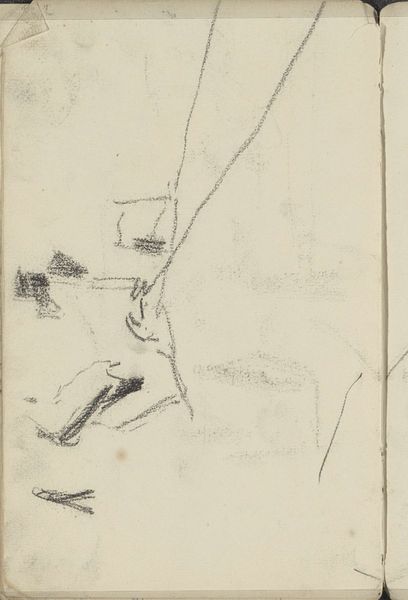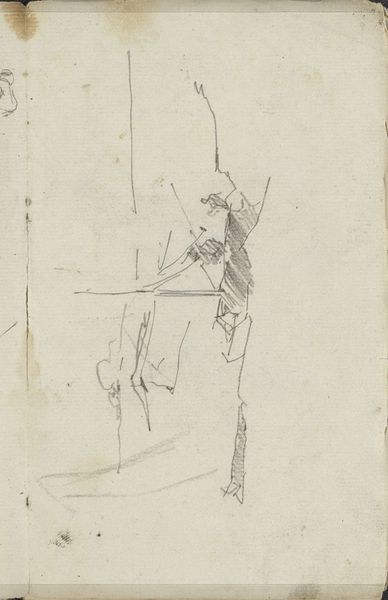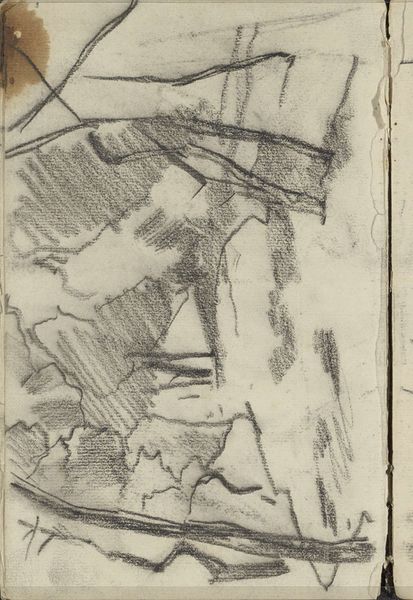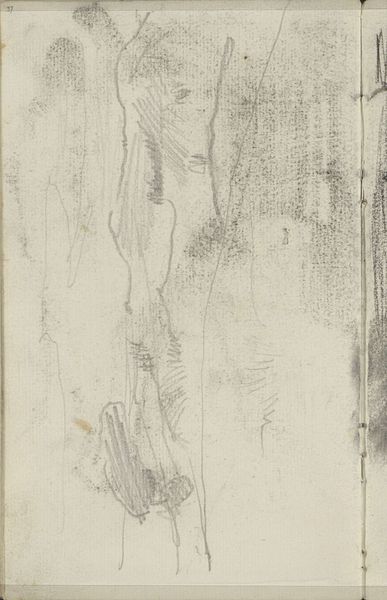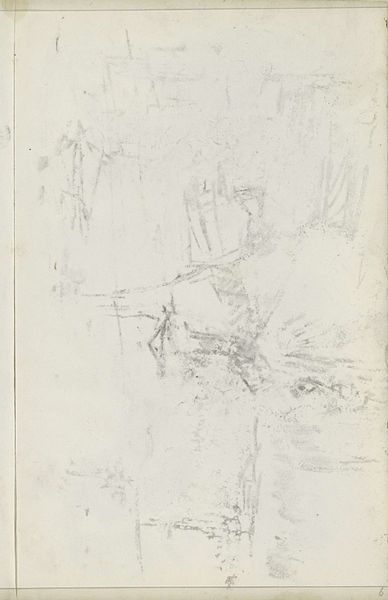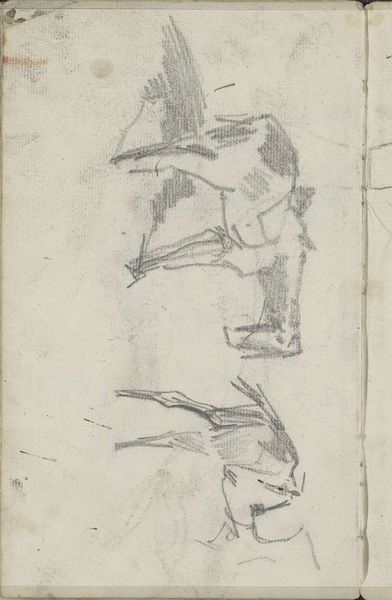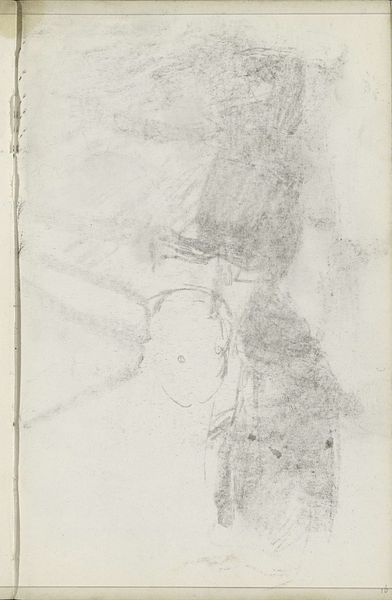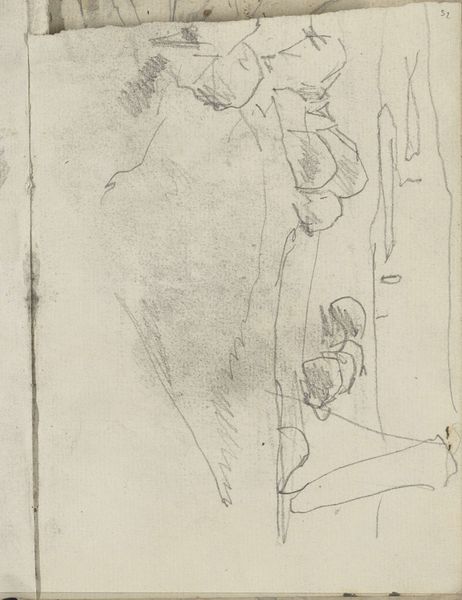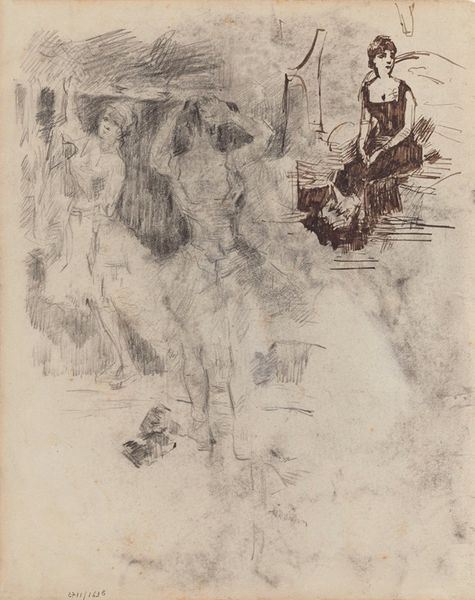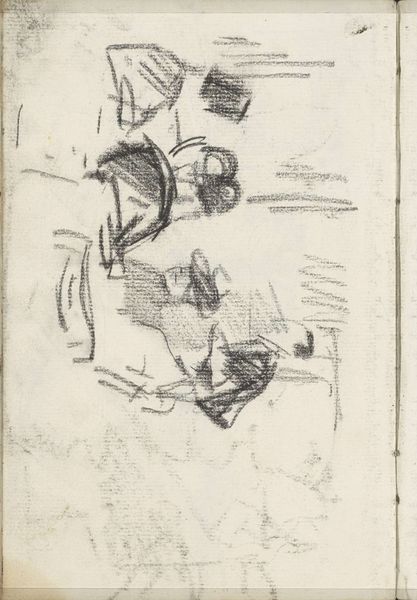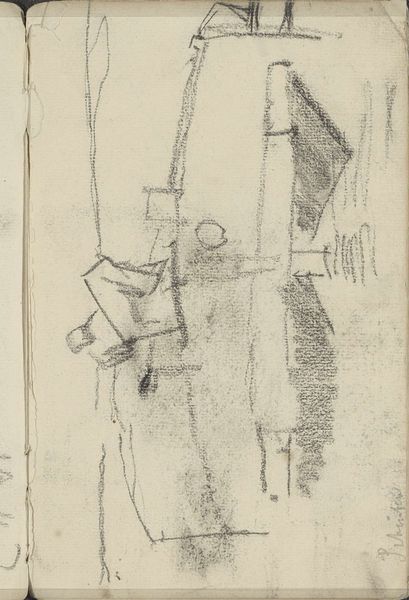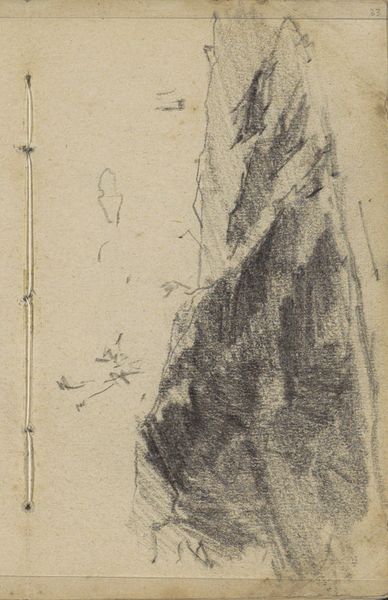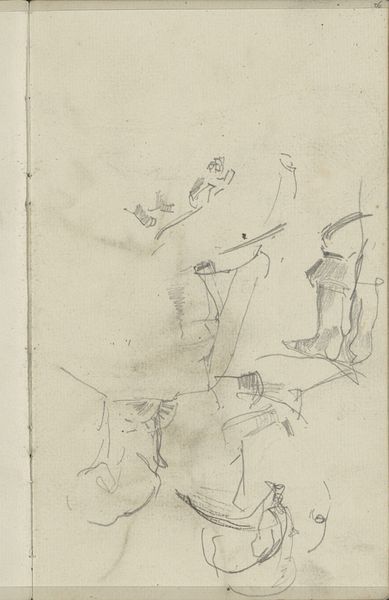
drawing, paper, pencil, charcoal
#
drawing
#
impressionism
#
pencil sketch
#
landscape
#
figuration
#
paper
#
sketch
#
pencil
#
charcoal
Copyright: Rijks Museum: Open Domain
Curator: It feels incomplete, a fleeting moment captured on paper, doesn't it? Almost like catching a glimpse of a dream before it fades. Editor: You're right, it possesses that certain…ephemeral quality. What exactly are we looking at here? Curator: This sketch, called "Dier in een landschap," or "Animal in a Landscape," was made by George Hendrik Breitner around 1880. It's crafted with pencil and charcoal on paper. Editor: Animal, eh? I see the suggestion of…something. Perhaps a bird, perched precariously at the top. But my gaze is immediately drawn down, swallowed by the rougher, more heavily rendered marks that form the base. There's an energy here, a rawness. The composition, despite its lack of finish, possesses a compelling dynamism. It resists stasis. Curator: Yes! I think Breitner's genius is evident in those unfinished areas. It allows our imagination to fill in the gaps, to become collaborators in the act of creation. For me, there's a melancholic beauty in the subdued palette. It speaks to a time of rapid industrialization, maybe reflecting a yearning for the simpler rhythms of the countryside. You know, when I look at this, I’m reminded of going hiking in the hills, searching for the hidden pathways. Editor: You locate melancholy; I find urgency. Note the nervous energy within the charcoal hatching, the repetition, creating layered textures that coalesce, then disintegrate as you move throughout the composition. One could examine this as a nascent example of seriality that comes to inform modern art. It anticipates so much of what would come. Curator: Exactly, it seems that you also find it innovative! But for me, I simply find beauty in nature; its simple lines create such evocative feelings, especially regarding this era of dramatic change. What is also curious to me is the animal that is barely shown on the top section; why do you think the author chose such a subtle symbol? Editor: It disrupts any clear hierarchy. It asks: What dominates this landscape? Object or ground? The "animal," relegated to an almost abstract marking at the picture's periphery, becomes subservient to its context, just as perhaps Breitner perceived human subjugation before the encroaching, transformative forces of modernity. Curator: Huh, a fresh outlook! Maybe that fleeting animal at the top is our subconscious reminding us of the untamed aspects within. A ghost from our shared past that is constantly talking to us. Editor: Yes, but even ghosts adhere to underlying structures that organize their spectral appearances, rendering them, even in the realm of the invisible, objects worthy of endless formal inquiry… Curator: Okay, formalist! I will leave it to you; as for me, I must go searching for my ghost animal... Thanks for being with me on this hike!
Comments
No comments
Be the first to comment and join the conversation on the ultimate creative platform.
